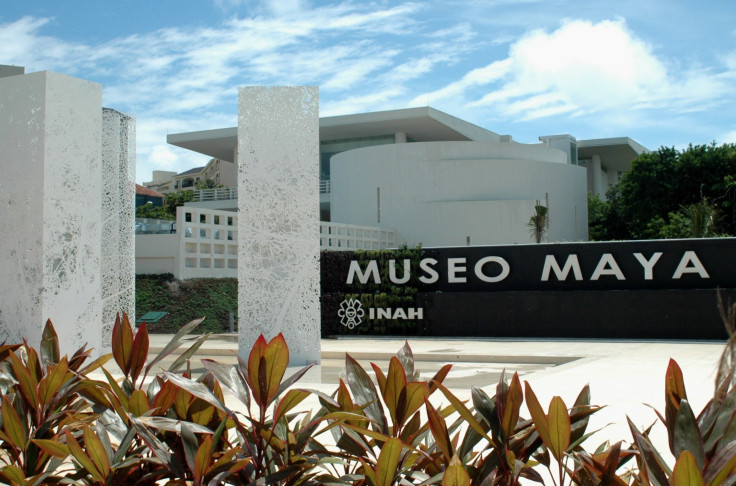As December 21, 2012 Approaches, Mexico Opens $15 Million Maya Museum

Mexico has opened up a massive new museum in Cancun just in time for the world to end on Dec. 21, 2012 -- that is, if you believe in some of the more radical interpretations of the Maya calendar.
Six years in the making, the massive Museo Maya de Cancun is the largest structure built by the National Institute of Anthropology and History (INAH) since the Templo Mayor Museum in 1987. It boasts three exhibition halls of more than 4,400 square feet, as well as two permanent and one temporary venue for international exhibitions.
Inside, visitors first encounter 14,000-year-old skeletal remains discovered in the last 12 years in Tulum’s underwater caves, which offer important clues to the arrival of mankind on the American continent. Beyond that, they’ll find more than 350 archeological artifacts, including relics that have never before been shown to the public and others discovered in recent excavations. The remainder of the items on display throughout the museum were culled from different venues like the Museo Regional de Yucatan or “Canton Palace” and the former Archeological Museum of Cancun.
Some 70 percent of the estimated $15 million project came from the federal government through the INAH. Designed by Mexican architect Alberto Garcia Lascurain and built on an area of over 55,000 square feet, it sits next to the recently opened San Miguelito archeological site, which was inhabited over 800 years ago until the arrival of the Spanish conquistadors.
Cancun, which recently underwent a $71 million makeover, is the most popular tourism destination in Latin America, attracting more than 12 million annual foreign and local visitors. Mexico’s tourism board, however, wants to attract even more visitors to the nation, particularly those who seek not just sun and sand, but culture.
The Mexican government expects that the museum will attract about a million guests each year and form one of the pillars of the nation’s new push to become a top destination for the type of people who generally have more money and stay longer than the average beachgoer.
Mexico, whose travel and tourism industry now constitutes 13.2 percent of the country's GDP, set aside $10 million for the Mundo Maya 2012 initiative last summer, and it invited four neighboring countries with historic Maya ties -- Belize, El Salvador, Honduras and Guatemala -- to collaborate. The campaign revolves around the end of the Maya calendar on Dec. 21, 2012, and the beginning of a new era, and it includes aggressive infrastructure investment in roads and facilities to improve access to archeological sites and develop projects like the Maya Museum.
Beyond the money and attention, what Mexico really hopes to get out of the Year of the Maya is a little respect. Sure, the government acknowledges that just 40,000 of its estimated 200,000 archeological sites are properly registered. Sure, just 200 of those are open to the public. But the more Mexico can diversify its tourism offerings away from the beach and into the interior, its tourism board argues, the more it can protect its heritage, draw international crowds from beyond North America and ultimately prosper.
“One of the beauties of tourism is that it spreads social wealth,” Rodolfo López Negrete Coppel, COO and undersecretary of the Mexico Tourism Board, told IBTimes in September. “It reaches the farthest corners of the country, reaches deep in the jungles and to the little villages.”
The Mundo Maya campaign, he said, is like a rallying cry: We’re not just America’s playground south of the border. We’re not just sun, sand and too many tequila shots. We’re a nation with a cultural wealth on par with China or Egypt.
That, he said, was Mexico’s plan for the new era. The new Maya Museum in Cancun is just the beginning.
© Copyright IBTimes 2024. All rights reserved.












